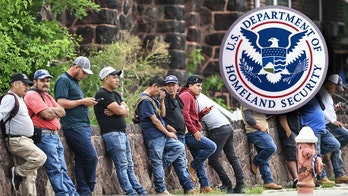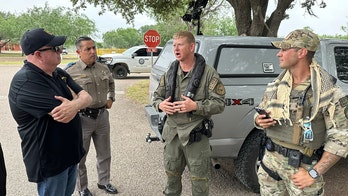
Nov. 29: Workers began the tedious task of reviewing more than 2.1 million ballots in the governor's race. Democrat Mark Dayton is hoping the recount confirms his nearly 8,800-vote lead over Republican Tom Emmer. (AP)
ST. PAUL, Minn. -- Minnesota hit the reset button Monday in another close election as workers began the tedious task of reviewing more than 2.1 million ballots in the governor's race -- one at a time and under the watchful gaze of volunteers and lawyers for Democrat Mark Dayton and Republican Tom Emmer.
The recount follows on the heels of a 2008 standoff over a U.S. Senate seat for Minnesota that stretched into the following summer.
All sides say they're eager to button up this election sooner. But given the stakes, no one is taking the recount lightly.
Dayton hopes the recount validates a nearly 8,800-vote lead he had coming in, giving his party the governor's office for the first time in two decades. A come-from-behind Emmer win would give Republicans complete control of the Statehouse after the GOP won control of both legislative chambers in November's election.
The taxpayer-funded recount is automatic because Dayton's lead is within a half-percentage point.
At 9 a.m., workers will open ballot boxes in county auditoriums, jury rooms, convention ballrooms and government centers across the state.
"This is all on a pretty fast track," said Secretary of State Mark Ritchie, the top Minnesota election official. "The counties are saying 'OK, let's go."'
Armies of campaign volunteers and lawyers will fan out, too, ready to object to ballots where a voter's intent isn't crystal clear.
If all goes as planned, every ballot will have had a second look by Dec. 7, and stacks of disputed ballots will have been sent to St. Paul for the state Canvassing Board to rule on. A winner could be certified by Dec. 14, although litigation could follow.
Dayton and Emmer have both created transition teams to build their administrations. The next governor is supposed to take office Jan. 3, but there's a chance departing GOP Gov. Tim Pawlenty could be pressed into longer service if the race isn't resolved by then.
During the recount, election officials will divide ballots into piles for Dayton and Emmer. Those without a vote for either candidate go into a third pile.
Two more piles will be made of ballots challenged by either campaign. Those ballots will ultimately be taken by secured courier to the five-member Canvassing Board, which will make the final ruling on whether it counts, and for which candidate.
State law bars "automatic or frivolous" challenges, and those challenging ballots must sign their name beside the reason given.
Because of a rule change made after the 2008 recount, local authorities have more power to deem a challenge "frivolous," and it's not known yet whether the canvassing board will give those ballots another look.




